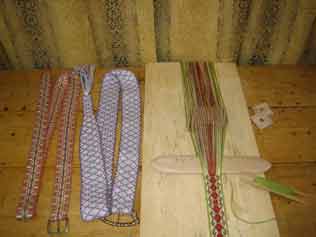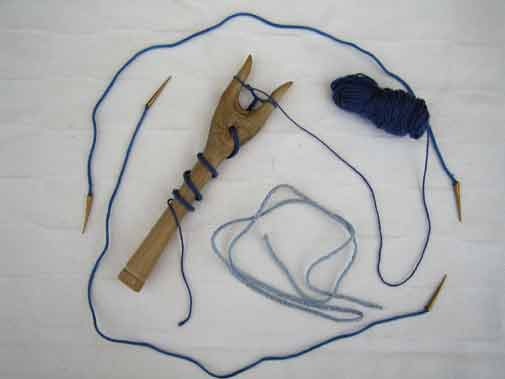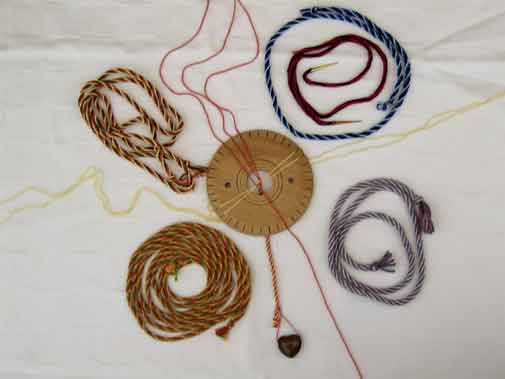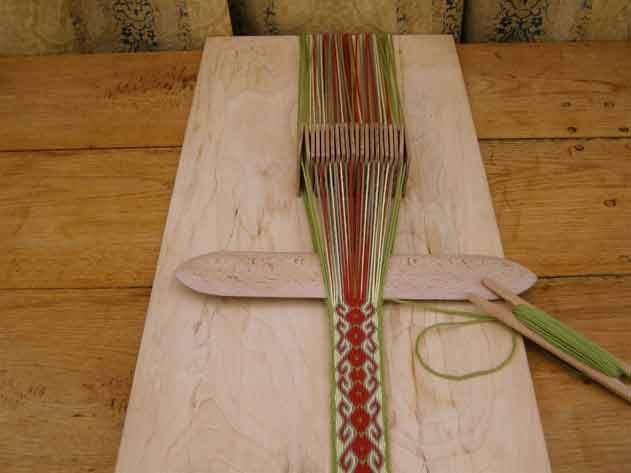| Archery |
| Brewing |
| Calligraphy & writing |
| Combat |
| Cooking |
| Dance |
| Etiquette |
| Household life |
| Medicine |
| Music |
| Needlework |
| Playacting |
| Religion |
| Storytelling |
 |
 |
Sewing a smock |
Tablet Weaving |
Sewing was one of the basic skills which every woman
learned, no matter what her status in society. In the lower classes the
women had to make all the family’s garments; in the higher echelons
of society, even though professional tailors made the majority of the
elaborate garments worn, women still took pride in making beautifully
embroidered shirts for their men folk. Anne Boleyn was mortally offended
when she found that Catherine of Aragon was still making fine shirts for
Henry! When everything is hand made, needles and pins are of great value.
Pins are often used in securing costume as well as in sewing and may have
heads made of coloured glass, pearl or gemstones: hence a woman’s
allowance of “pin money”. Lady Anne made the costumes behind
the scenes, but in public is rarely to be found without some fine sewing
or embroidery and she may also be seen making elaborate braids by tablet
weaving – a technique which allows the maker to produce amazing
patterns impossible to reproduce by any other means. |

| The lucet is used to make cord and can
also produce narrow braids. In the days before zips, clothes were often
fastened with “points”: a length of lucet cord with an “aiglette”
at each end. The cord could then be threaded through eyelets in the garments
to fasten them. In addition, men’s hose were fastened to their doublet
or pourpoint with points; sleeves were often separate to make them detachable
or changeable with points. |

| The braiding disc allows you to make
fine or thick cords with a multitude of colours and designs and is quite
easy to work. The blue braid shown in the top right of the picture was
a member’s very first effort. For this reason, the braiding disc
is useful for involving members of the public. |

| This more detailed picture shows a tablet weaving in progress. The square tablets have a hole in each corner through which the thread passes. Turning the tablets creates the shed of the weave. This complex pattern is created by turning some of the tablets towards the weaver and some away. It is also determined by the threads passing through the tablets either right to left or left to right to maintain the symmetry of the design. Tablet weaving is very satisfying to do as the designs can be as simple or as complex as the weaver wishes. |